Best Video Cards: June 2014
by Ryan Smith on June 30, 2014 11:00 AM EST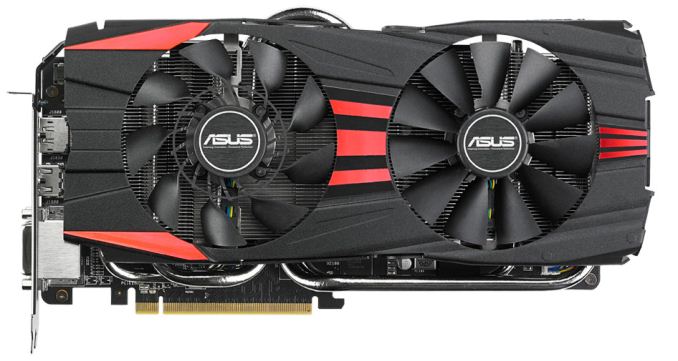
We’re back once again with our monthly guide to video cards and video card industry recap, this time for June of 2014.
June has been another quiet month from a product standpoint. There were no new product launches from AMD nor NVIDIA in the more exciting over-$100 market, however NVIDIA did quietly launch the GT 740 and GT 730 for the sub-$100 market.
| NVIDIA New Video Cards (June 2014) | |||||||
| GT 740 (GDDR5) | GT 740 (DDR3) | GT 730 (GDDR5) | GT 730 (DDR3) | GT 730 (Fermi) | |||
| CUDA Cores | 384 | 384 | 384 | 384 | 96 | ||
| Texture Units | 32 | 32 | 32 | 32 | 16 | ||
| ROPs | 16 | 16 | 8 | 8 | 4 | ||
| Core Clock | 993MHz | 993MHz | 902MHz | 902MHz | 700MHz | ||
| Boost Clock | N/A | N/A | N/A | N/A | N/A | ||
| Memory Clock | 5GHz GDDR5 | 1.8GHz DDR3 | 5GHz GDDR5 | 1.8GHz DDR3 | 1.8GHz DDR3 | ||
| Memory Bus Width | 128-bit | 128-bit | 64-bit | 64-bit | 128-bit | ||
| VRAM | 1GB | 2GB | 1GB | 2GB | 1GB | ||
| FP64 | 1/24 | 1/24 | 1/24 | 1/24 | 1/12 | ||
| TDP | 64W | 64W | 23W | 38W | 49W | ||
| Transistor Count | 1.3B | 1.3B | N/A | N/A | N/A | ||
| Manufacturing Process | TSMC 28nm | TSMC 28nm | TSMC 28nm | TSMC 28nm | TSMC 28nm | ||
| Architecture | Kepler | Kepler | Kepler | Kepler | Fermi | ||
| GPU | GK107 | GK107 | GK208 | GK208 | GF117 | ||
| Launch Date | 06/01/14 | 06/01/14 | 06/01/14 | 06/01/14 | 06/01/14 | ||
| Launch Price | ~$89 | ~$89 | ~$75 | ~$75 | ~$75 | ||
The GeForce GT 740 is for all practical purposes a rebadge of the GTX 650 with a lower retail price of $89. NVIDIA’s official specifications call for 993MHz on the core clock versus GTX 650’s 1058MHz, but most cards are going to be above this (some exceptionally so). As this is a rebadge this means we’re looking at another GK107 product. While NVIDIA already has the more efficient GM107 GPU, GK107 will still be with us for some time to come as GK107 is notably smaller than GM107, making GK107 cheaper to fab and a better fit for these sub-$100 cards.
Since it is GK107 based power consumption follows the previous GTX 650, which puts official power consumption at 64W but still requiring an external PCIe power connector. This means that GTX 750 retails its edge (and its higher price premium) due to its combination of lower power consumption and greater performance. Finally, we should point out that NVIDIA has launched two GT 740 variants, a GDDR5 version and a DDR3 version. The GDDR5 version will be vastly superior to the DDR3 version, though NVIDIA is making the usual memory size/speed tradeoff here, with the GDDR5 version having a standard 1GB of VRAM versus a standard 2GB for the DDR3 version.
Moving on, as is usually the case for NVIDIA’s lowest-price products, the GeForce GT 730 is an unfortunate mix of different GPUs. NVIDIA is offering GK208 and GF117 versions of the cards – yes, Fermi is back once again – which means the performance of the card is going to depend on which version it is. All told NVIDIA is offering 3 versions of the card: GK208 with 1GB of GDDR5, GK208 with 2GB of DDR3, and GF117 with 1GB of DDR3. The GK208 GDDR5 version should be the strongest performer, however due to GK208’s 64-bit memory bus, the GF117 card exists in a particular odd place due to its small CUDA core count (96 Fermi cores) versus its wider 128-bit memory bus.
As it stands the sole GT 730 card on Newegg is the GF117 card, so for the moment there isn’t a choice. At $75 it looks to be unremarkable, and for all practical purposes we don’t expect to see much of this card in North America as these extreme budget cards are typically focused on APAC and other price-sensitive regions. But if nothing else it’s a stark reminder of just how much GPU vendors have to sacrifice to make these sub-$100 cards, which is why $100 to $150 is the performance sweet spot.
As for AMD, although there are no new products to speak of we’ve seen the bulk of AMD’s products gradually decrease in price over the last month. Radeon R7 260X, R9 270X, R9 280X, and R9 290 have all fallen by $10-$20 over the last month, offering even better values for the money and further improving AMD’s competitive positioning in the process. Consequently we’ve made a few tweaks to our recommendations since last month, most notably replacing 250X with 260X at the $99 price point.
Moving on, rather than repeat ourselves at every tier by recapping the current game bundles, we’ll go over it once at the beginning. AMD is continuing to offer their Never Settle Forever bundle, with their flagship titles being Thief and Murdered: Soul Suspect. The 260 and 270 series cards get 2 games, while the 280 and 290 series get 3. Meanwhile for their GTX 750 series cards NVIDIA is offering their $150 free-to-play bundle, while the GTX 760 and higher include Watch Dogs.
Finally, speaking of Watch Dogs we’d like to throw out a Watch Dogs inspired question to our readers for this month’s guide. While Watch Dogs’ PC launch has been rough, one thing it has none the less made clear is that we’re on the cusp of another shift in VRAM requirements, due in large part to the fact that both the PS4 and XB1 have 8GB of RAM. While not all of that RAM is used for assets and other rendering data, a significant portion is, and as a result the consoles can dedicate more RAM to rendering that many video cards can today. So with that in mind we’d like to get your feedback on the importance of VRAM.
Is 2GB/3GB still enough for a new GTX 770/R9 280X, or should these cards come with more memory? And how much more would you be willing to pay for double the memory? Keep in mind that it has been 2+ years since the base versions of these cards came out at 2GB and 3GB respectively, so we’re wondering where you guys stand since these cards are at a greater risk of being VRAM limited going forward.
Anyhow, market summaries behind us, let’s look at individual recommendations. As always, we’ve laid out our ideas of price/performance bands and recommendations in our table below, with our full explanations and alternative options to follow. As always, in the case of the sub-$200 market it’s worth pointing out that there’s a video card for roughly every $10, so picking a good video card is as much about budgets as it is finding an especially strong card.
| June 2014 GPU Performance Guide | ||||
| Performance Band | Price Range | Recommendation | ||
| 1080p (Low) | $99-$149 | AMD Radeon R7 260X | ||
| 1080p (Med) |
$149-$179
|
|||
| 1080p (High) |
$179-$279
|
|||
| 1440p (Med) |
$279-$389
|
|||
| 1440p (High) |
$389-$649
|
|||
| 1440p (Max) |
$649+
|
|||
| 4K/Multi-Monitor (High) |
$800+
|
|||
As a general recommendation for gaming, we suggest starting at $99. There are cards below this price, but the amount of performance you have to give up below $99 far outweighs the cost. Even then, performance gains will generally exceed the price increases up to $150 or so.
Meanwhile for gamers looking for high quality 1080p gaming or better, that will start at around $199. Going above that will find cards that are good for 1440p, 4K, and multi-monitor, while going below that will find cards that will require some quality sacrifices to stay at 1080p.
Finally, this guide is by its very nature weighted towards price/performance, based on the passionate feedback we've received from our readers. For these purposes we consider AMD and NVIDIA to be equal from a functionality and compatibility perspective, but it should be said that both parties have been building out their ecosystem in the past year, and this will only continue to grow as the two companies try to differentiate themselves. So if you need or want functionality beyond the core functionality a video card offers, it may be worthwhile to familiarize yourself with the NVIDIA and AMD ecosystems, including Gameworks, Eyefinity, Mantle, GeForce Experience, and more.
Budget (<$100): AMD Radeon R7 260X
The $99 price point is a bit of a quagmire at the moment due to a gradual repositioning of cards. Picking among cards here essentially comes down to “hard” prices versus prices that include mail-in rebates.
Our official recommendations typically factor in rebates and we’ll do the same here. In which case we’re comfortable recommending AMD’s Radeon R7 260X at this time. Based on a full-fledged version of AMD’s Bonaire GPU, the R7 260X is one of AMD’s latest-generation GCN 1.1 GPUs and packs AMD's latest features while offering a good balance between price and performance. The price of the 260X has slowly been coming down over the last few months, and at this point there are enough cards available at $99 (4 by our count) to make for a decent selection and supply.
From a performance perspective, compared to AMD and NVIDIA’s other products the 260X is faster than anything else near $99 on both sides of the aisle, easily making it the strongest choice. Now this still isn’t going to quite hit the sweet spot we outlined earlier, but for those gamers on a strict budget it will get the job done. In the long run it should be able to run most games even at 1080p with medium-to-low settings, and its 2GB of VRAM should allow the use of higher quality textures in most current games. Battlefield 4, GRID 2, and even Total War: Rome 2 can easily hum along on this card at decent settings at 1080p.
Runner Up: AMD Radeon R7 250X & NVIDIA GeForce GTX 750
With the aforementioned quagmire in mind, we have two different runner-ups at $99. Because the 260X is only a “soft” $99 – that is, after mail in rebates – we’re also making a suggestion for a hard $99 card: AMD’s Radeon R7 250X. Much like the 260X, the 250X stands alone in its little niche of the world, offering notably better performance than NVIDIA’s closest competitor, the GT 740. But if you can put up with a rebate, either the 260X or our next runner up will be much better performers for the money.
Our second runner up meanwhile is NVIDIA’s GeForce GTX 750. The GTX 750 still holds an average price near $119, but we’ve seen the occasional card flirt with $99 after mail in rebate. Against the R7 260X it’s still going to be several percent slower and it packs less RAM – 1GB standard versus 2GB on most 260X cards – but it has an ace up its sleeve in its sub-75W power consumption, making it more favorable in power or cooling constrained systems.
Mainstream Sweet Spot ($149): AMD Radeon R7 265
Among the crowded $149 market our primary recommendation is the Radeon R7 265, AMD’s lowest-tier Pitcairn card designed to lock in this price point. Essentially a 7850 with a higher GPU clockspeed and a revised memory bus allowing for higher memory clockspeeds, the R7 265 a very capable card for the price.
From a performance standpoint the R7 265 not going to be able to play every game at 1080p at high settings, but it will be fast enough for medium-to-high depending on the game, which will be a couple of notches higher than what the $99 cards can do. Meanwhile the 2GB of VRAM will mean that future games shouldn’t bog down the card quite as badly; higher graphical fidelity games will slow it down like any other card, but there’s enough VRAM to keep up with the demands of higher resolution textures and heavier use of intermediate buffers.
Runner Up: NVIDIA GeForce GTX 750 Ti
Powered by NVIDIA's Maxwell architecture, NVIDIA's competition at this tier and our runner up for $149 is the GeForce GTX 750 Ti, a card that offers performance approaching the R7 265 with much lower power consumption. The GTX 750 Ti is a sub-75W card – no external PCIe power connector required – allowing it to work in cases and systems where the near-150W R7 265 cannot, while also offering the improved acoustics that come with lower power consumption. So for OEM upgrades, or buyers just looking for something even quieter, the GTX 750 Ti is an interesting alternative. Just keep in mind that from a performance standpoint it trails the R7 265 by about 16%.
As an added bonus, just as with the GTX 750, we’ve seen the occasional GTX 750 Ti card going for well below its average price of $139 when it’s on sale. If you can grab one for less than $125, GTX 750 Ti is a nice half-way point between our $99 and $149 cards in price and performance, while still offering the aforementioned power benefits.
1080p Gaming ($179): AMD Radeon R9 270X
Moving up our product lists, at $179 we’re finally up to cards that are fast enough to play most games at 1080p with high-to-ultra settings. More powerful/expensive cards will offer a further edge for the most demanding games, along with offering a bit more longevity, but for most games at the extremely common resolution of 1080p, it only takes $179 to hit a great level of graphical fidelity for that resolution.
To that end there is no better card at this price than AMD’s Radeon R9 270X. Based on a fully enabled Pitcairn GPU, 270X easily offers the most bang for the buck, keeping its distance from NVIDIA’s GTX 660 while getting rather close to NVIDIA’s more expensive GeForce GTX 760. Furthermore thanks to a gradual reduction in prices the 270X is looking especially good this month; whereas even last month most 270X cards were at $199, this month it’s very easy to grab one for $179 or less.
Runner Up: NVIDIA GeForce GTX 760: The GeForce GTX 760 offers a small but respectable performance lead over the Radeon R9 270X. On a pure price/performance basis it doesn’t make sense, and at $229 sits in an odd gap between the $179 270X and the more capable $300 cards, but for buyers looking for an NVIDIA option for 1080p gaming around $199, it’s as close as one can get.
Reaching For 1440p ($279): AMD Radeon R9 280X
Based on AMD’s venerable Tahiti GPU, the Radeon R9 280X offers the performance of the Radeon HD 7970 at around half the launch price of the aforementioned card. Since coming back down to its MSRP the 280X has continued to fall in price some, and lower-end cards can now regularly be found on sale for less than $279.
For the 280X we’re looking at a card that will straddle 1080p and 1440p. It’s not quite fast enough to work in every game at 1440p with high quality settings, but it’s fast enough for many of them. Alternatively, it’s fast enough at 1080p that it has no problem at that resolution with everything cranked up, including high levels of MSAA and even SSAA in some games. Plus the 3GB of VRAM will give it some leg room if future games demand more VRAM.
On a competitive basis the R9 280X performs very similarly to NVIDIA’s GeForce GTX 770, generally trailing by a few percent. However with AMD making the conscientious decision to undercut NVIDIA on pricing here by around $30, so it gets our nod for this bracket.
Runner Up: NVIDIA GeForce GTX 770
NVIDIA’s counterpart to the R9 280X is the GeForce GTX 770. With the cheaper GTX 770 cards now available for around $309 it still holds a price premium over AMD. In turn however the GTX 770 is ever so slightly faster than the 280X – leading by a few percent on average – which generally isn’t enough to offset the price difference, but it goes without saying that it leaves the two cards close. The GTX 770 is a practical alternative to the 280X in this case, trading a slightly higher price tag for entry into NVIDIA’s ecosystem, something that may become more important as G-Sync monitors are scheduled to become available at retail next month.
Extreme Performance for Cheap ($389): AMD Radeon R9 290
For gamers who want to top-tier performance without completely breaking the bank, AMD’s Radeon R9 290 is easily going to be the card of choice. Offering performance that rivals the more expensive R9 290X and GeForce GTX 780, the 290 is unparalleled in performance for its price. At this level of performance it should be able to run virtually anything at 1440p with high-to-extreme settings, and 1080p gamers should have no trouble hitting 120fps in anything that isn’t CPU limited to begin with.
As the vast majority of reference-style cards have gone out of circulation by now, there is thankfully a good selection of superior semi-custom and fully-custom cards at and below $389 (and sometimes on sale for under $350). These cards offer all of the fantastic performance of the 290 without the noise or throttling drawbacks of the reference 290. Just keep in mind that all of these cards will be open air cooled cards that will want a case environment that can dissipate the additional 250W-300W of heat.
Extreme Performance with Refinement ($499): NVIDIA GeForce GTX 780
Positioned as NVIDIA’s lowest tier GK110 card, the high performance offered by the GeForce GTX 780 means it should be fast enough to run virtually anything at 1440p with high-to-extreme settings, and 1080p gamers should have no trouble hitting 120fps in anything that isn’t CPU limited to begin with. To that end the GTX 780 is the cheapest card that can drive all sub-4K single-monitor setups, giving it a sweet spot position of its own in the current market.
As an added bonus, even at the $499 base price this gets access to NVIDIA’s impressive metal shrouded blower, which in our tests is enough to keep noise levels under 50dB. So for gamers looking for a balance between performance, cooling effectiveness, and noise, the GTX 780 is a star. Meanwhile for gamers looking at open air coolers, GTX 780 cards with alternative coolers such as EVGA’s ACX cooler will find that the GTX 780 can be even quieter for the usual tradeoff between a blower and an open air cooler.
Runner Up: Radeon R9 290X
AMD's closest competitor for the GTX 780 is the R9 290X, which this month has oddly drifted upwards in price and is usually found at $529 or above. Like the R9 290 the supply of reference cards is nearly gone, so everything from top to bottom is an acoustically superior semi/fully-custom open air cooled card. Looking primarily at the cheapest cards – what are essentially near-reference in clockspeeds and features – the R9 290X puts up a good fight with the GTX 780, capable of edging it out at the same retail price. The issue 290X faces right now is that the 290 is so close in performance that it doesn’t have much of a lead here, making it harder to stand apart from the 290 and the GTX 780.
Taking the Single-GPU Crown For Gaming ($649): NVIDIA GeForce GTX 780 Ti
For the fastest single-GPU card on the market for gamers, NVIDIA’s top tier GK110 part, GeForce GTX 780 Ti, stands alone. The performance advantage over the Radeon R9 290X (or even the 290 for that matter) is not incredible, but there’s admittedly nothing new about paying a notable price premium for the very best card.
4K for Me ($800+): 2x AMD Radeon R9 290
With the arrival of relatively cheap 28” TN 4K monitors, we’re shaking up our 4K recommendation a bit. Rather than sticking with the Radeon R9 290X we’re switching to the cheaper Radeon R9 290. This is a tangible loss in performance, but it brings the price tag down by nearly $300 at current card prices. This puts a 4K video card setup at a bit less than $800 – versus $600 for the monitor – an odd situation where card prices now exceed monitor prices, but none-the-less necessary as the incredible performance that 4K rendering requires means that anything less requires greatly sacrificing resolution or image quality.
In any case, of all the dual-GPU options for 4K at the moment AMD holds the edge thanks to the combination of their XDMA engine and their greater ROP throughput. We’ve consistently seen AMD achieve better scaling than NVIDIA here, so coupled with the lower price of the R9 290 AMD holds an important price edge and a performance edge.
The only drawback with this setup is that all of the good 290 cards are open air coolers, which means they require more space and better chassis cooling. A pair of blowers would be easier to work with here, but that would require moving up to a pair of GTX 780s at $1000, at which point we may as well bring in the GTX 780 Ti, especially if it’s going to be paired up with a higher quality and more expensive IPS/IGZO monitor.
Of course the Radeon R9 295X2 also deserves a mention here. As we discussed in our recap of April, AMD’s dual-GPU flagship card offers all of the performance of the 290X in Crossfire with much better acoustics and in a smaller package. Since our guide is based first and foremost on price/performance our primary recommendation for this bracket is going to be the 290 CF, but if you can make the steep climb to $1500 the 295X2 and its liquid cooler is a very impressive product whose vastly improved acoustics, better performance, and compact size make 295X2 a superior option to 290 CF.
Finally, the GTX 780 Ti in SLI is also going to be a viable alternative here. From a performance perspective it will trail the AMD setups by 5% or so at 4K, so while it can’t match the AMD setups hit-for-hit it doesn’t significantly fall behind, making it practical to get similar performance in the NVIDIA ecosystem. The catch is that at $1300 for the dual card setup it’s closer to the 295X2 than the 290 CF in price, so it doesn’t have a distinct sweet spot on price or acoustics like either AMD configuration. But unlike either AMD option, the GTX 780 Ti is available in a high quality blower configuration, allowing a 3rd option between the widely spaced open air cards of R9 290 and the unconventional CLLC of the R9 295X2.


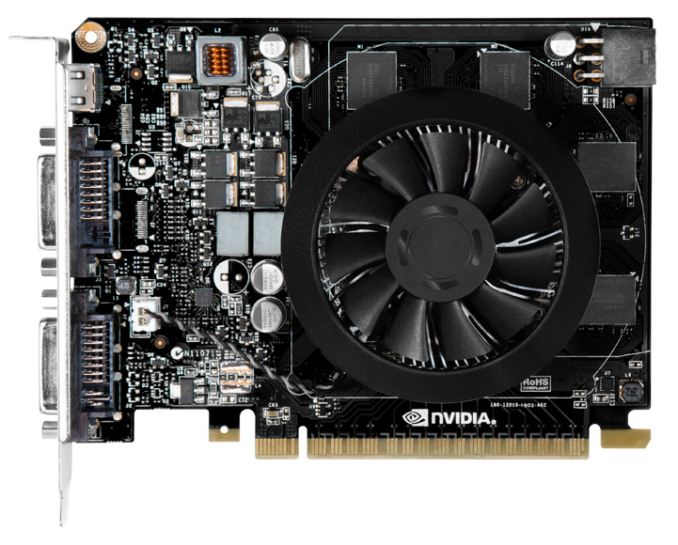
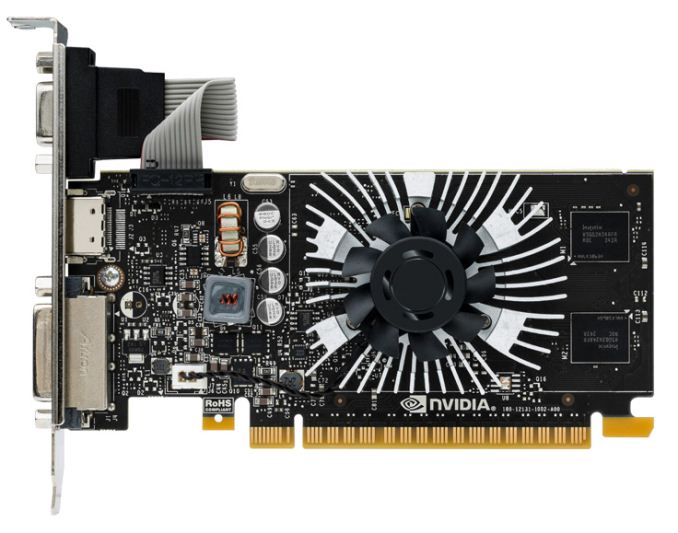

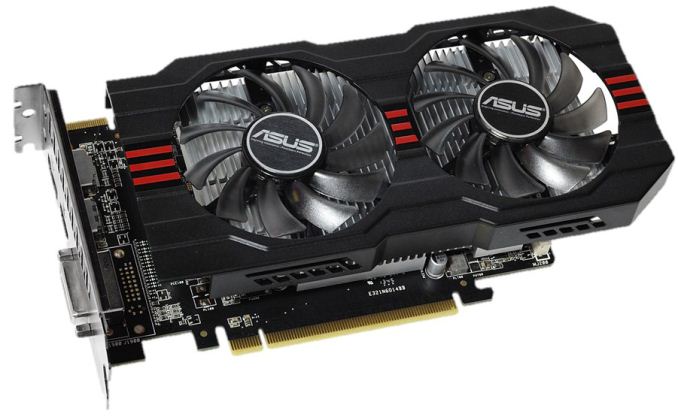

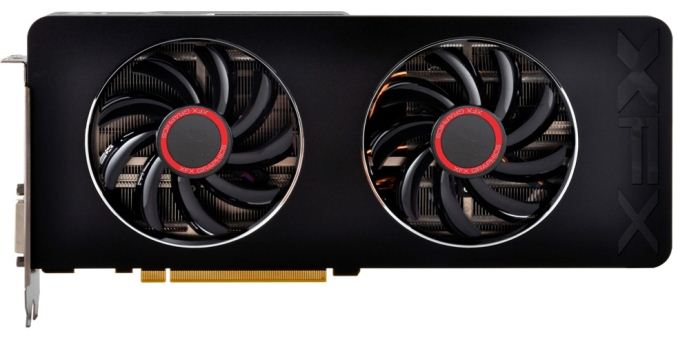
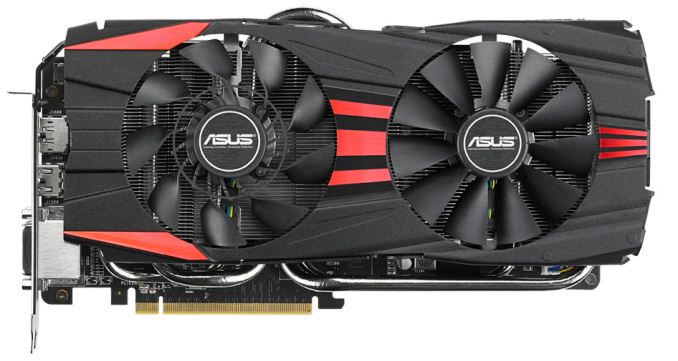
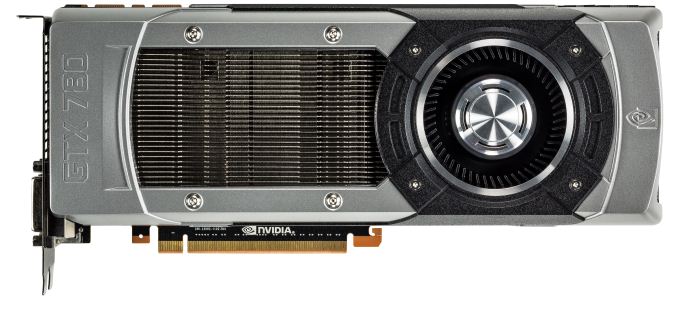
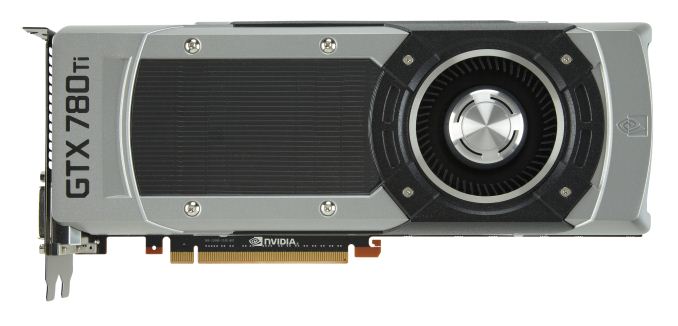









51 Comments
View All Comments
Wolfpup - Tuesday, July 1, 2014 - link
In theory I wouldn't mind buying a new GPU for 24/7 Folding @ Home to replace my GT 430 in a low end system that can't deal with much power draw...but what's astonishing is the GT 430 looks like it's still basically the same card as at least one version of the GT 730! Now that's some serious rebadging LOLSeems like there ought to be a Maxwell part that actually massively outperforms my Fermi based 96 core GT 430 in the same power envelope...I hope.
vargis14 - Tuesday, July 1, 2014 - link
Vram amount is why before this past christmas I had to upgrade my 3+ year old 2600k@4800mhz systems SLI'ed 1gb EVGA 560ti SC cards with a pair of 4GB EVGA GTX 770 Classifieds.They perform outstanding and I am presently saving up for the 34" LGUM95 21:9 3440-1440 ultra widescreen IPS monitor. I am going with this resolution because it is only 2.4 times the pixels of 1080p and not 4 times the pixels of a 4kUHD panel also I love the 21:9 widescreen format for far more peripheral vision along with tons of desktop real estate. I read the review on the monitor here on anand and the backlight problems are being addressed and if you purchase one make sure the date is says at least june production on the monitor. The April models have the backlight problem. But you never know there might be a better/cheaper 34" 3440-1440 resolution monitor out by the time i can afford it, but as of now my heart is set on LG's UM95. Those looking for 34" of ultra widescreen bliss that cannot push as many pixels LG also has the UM65 a 34" 2560-1080 panel for around $300 less. $599 vs $899 Never know I could be happy with the lower resolution model but I would prefer the 1440p model vs 1080p one.
Freakie - Tuesday, July 1, 2014 - link
So... What about the Titan Black? That is hands down the single-GPU king. I can understand leaving out the Titan Z, as the price of that thing is just utterly rediculous, but I should think that the Titan Black should be on the list especially if you absolutely do not want (or due to space requirements, don't have the room for) more than 1 card.SirKnobsworth - Tuesday, July 1, 2014 - link
The Titan Black won't offer significantly better gaming performance compared to the 780Ti. The main difference is more double precision floating point compute power and more memory (6GB vs 3GB), neither of which usually matters much in gaming.DrApop - Tuesday, July 1, 2014 - link
Game, game, game.Some of us do actual work using graphics cards. Not a single word on rendering capacity of these cards. If you own Adobe cs6 or below, amd is worthless. If you use Blender, cuda is your only option....and fermi trumps kepler.
How about a graphics card roundup from a perspective of people who use these graphics cards for work or rendering video for small business. Not all of us can afford a $3000 graphics card.
To be honest, I am sick and tired of all the talk about graphics cards and gaming. People have been doing video, modelling and other types of high quality rendering for a number of years now, yet have been completely ignored except for a benchmark or two.
Anonymous Blowhard - Wednesday, July 2, 2014 - link
I'd say a good 95% of video card buyers never do anything but game on theirs, maybe 4% do the odd video render, and the rest is you.That's why you can't find content or reviews with a non-gaming focus.
Besides, the answer for professional 3D is virtually always "go buy the fastest Quadro you can afford."
DrApop - Wednesday, July 2, 2014 - link
Have you watched youtube lately? How many rendered videos by the average Joe are there? There has to be millions. Yes, I do agree that gaming is a huge market. But with AMD and Nvidia releasing what seems to be 5-10 cards every time they do some little update (even just a fake number update) one would think they would do some tweaking of one of their cards to strengthen video/modelling type rendering and market it as such.A dude/dudette that even does small wedding/events type videos (of which I am not one) would benefit from such a video card......and likely can't afford a workstation like Quadro card.
Iketh - Tuesday, July 8, 2014 - link
LOL you're killing me... you've dug yourself into a false realitymost people render with their CPUs... you get a better quality video this way
GPUs can help with the editing, but a hyper-threaded quad-core is more than plenty
bnjohanson - Sunday, July 13, 2014 - link
You're a fringe share of the market; there are publications dedicated to just this and this is where you should roam. Combining, comparing, and contrasting rendering with gaming in the same article is like Road & Track magazine illustrating the performance comparisons of a Porche 911 with a Ford F-250. It would be whiplash....Samus - Monday, July 7, 2014 - link
Where the frak are the new Maxwell cards already? This is ridiculous they're sitting on this flyass architecture and the fastest thing they have is a 69-watt 750Ti.